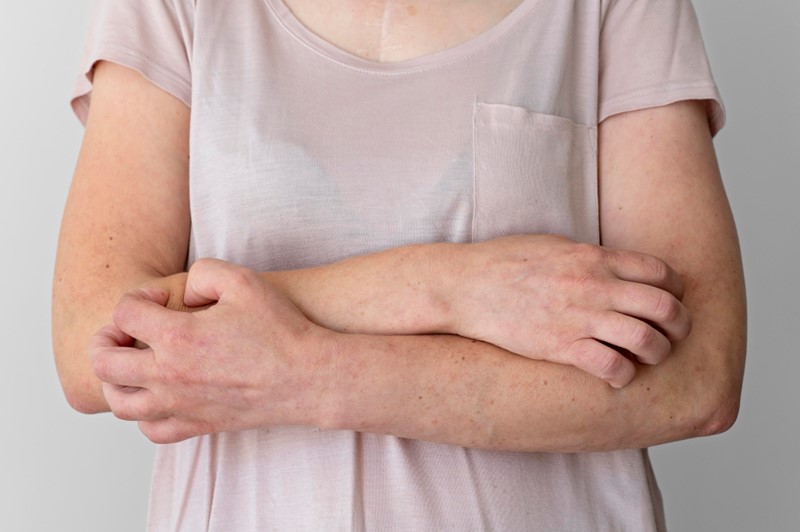Chemotherapy is an essential weapon in the fight against cancer. However, like most powerful drugs, it can have side effects. Among the most visible are skin reactions. These reactions are not just aesthetic but can also affect the patient’s quality of life.
Understanding Skin Reactions Due to Chemotherapy
Chemotherapy works by attacking rapidly dividing cancer cells. However, our skin cells also renew rapidly. That’s why chemotherapy can lead to various skin conditions. Among the most common are:
- Redness and dryness: The skin can become dry, rough, and scaly.
- Rashes: Small bumps or blisters that may be filled with pus.
- Hyperpigmentation: Darkening of certain areas of the skin.
- Itching: An irritating sensation that makes you want to scratch.
- Hand-foot syndrome: A condition that causes hypersensitivity, peeling, swelling, ulcers, and cracking on the hands and feet.
Mitigating Skin Effects
The good news is that most of these skin problems are reversible after stopping treatment. In the meantime, here are some tips to help minimize these discomforts:
- Clothing and sun protection: It is best to wear loose-fitting clothes made of natural fabrics like cotton or linen to let the skin breathe. Avoid any sun exposure that could worsen symptoms.
- Gentle skin care: Using a pH-neutral soap and lukewarm water for washing is advised. Pat gently with a soft towel to dry the skin.
- Appropriate diet: A diet rich in vitamins A, E, C, and omega 3 and 6 is beneficial for the skin. Favor nuts, colorful fruits and vegetables, as well as fatty fish. Avoid excessive consumption of red meat and ban sodas.
Ultimately, it’s essential to remember that although these skin reactions can be uncomfortable, they are generally temporary. Working closely with one’s doctor and taking steps to mitigate these effects can help make the treatment process more bearable.
References:




